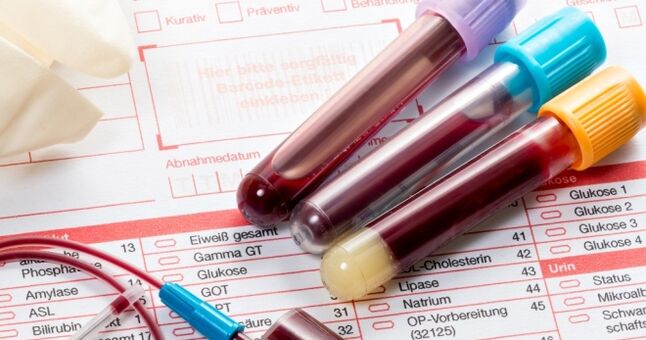
When symptoms and signs of disease are present, doctors order a variety of laboratory tests to confirm assumptions and make a diagnosis. In the list of appointments, the patient can find an analysis of HPV: what it is, why and when it is prescribed - not everyone can answer.
What is HPV?
Human papillomavirus, HPV is an entire group of common virus-like infections. Scientists know more than 100 of these viruses, and not all of them are dangerous to humans. Most are present in the body imperceptibly for a long time, causing transport. However, about 14 of these viruses are carcinogenic - they stimulate the growth of malignancies. When making a diagnosis, doctors always pay attention to the type of HPV, its carcinogenicity, determining further actions and the nature of the treatment.
Human papillomavirus - types
The papilloma virus is usually divided into types depending on the risk of provoking the growth of oncology. Taking this into account, there are three main groups of HPV:
- Does not cause cancer- Never causes the development of malignancies.
- Low risk of cancer- under certain conditions can cause the development of cancer: 6, 11, 42, 43, 44.
- High risk of cancer- When infected with these HPV viruses, it is difficult to avoid the development of malignant tumors. Human papillomaviruses: 16, 18, 31, 35, 33, 45, 58, 59, 52.
.jpg)
How is human papillomavirus transmitted?
Knowing how the papillomavirus is transmitted can reduce the risk of infection. However, in practice, this is difficult to avoid. In most cases, transmission occurs at the onset of sexual activity: sex is the main mode of transmission of the virus. Its transfer can also be done in a kiss, when there are small cracks and scratches on the surface of the lips. You can also get infected if you violate the rules of hygiene when visiting public places:
- sauna;
- Pool:
- bathroom;
- and even when using someone else's toothbrush, towel, or razor.
Infection can also occur when the baby travels through the mother's infected pathways during delivery. Experts do not exclude the possibility of transmission of the virus by contact: it is unstable, but can maintain some activity.Among the factors that provoke HPV infection:
- early initiation of sexual activity;
- a large number of sexual partners;
- sexually transmitted diseases;
- reduced immunity.
Human papillomavirus - symptoms
The human papillomavirus can remain invisible in the body for a long time. The incubation period, according to experts, can last from 2 months to 2 years. Progressive disease is subtle: there are no clinical symptoms, and the primary diagnostic methods are standard. One in three patients, thanks to their immune systems, recover within 6-12 months of infection.
Clinic of HPV causing damage to the body is reduced to the appearance of skin formations. Patients notice papillomas, warts, and papules on their skin. Their location can be different and corresponds to the place of entry of the virus into the body: genitals, surfaces of hands, lips. These formations resemble raised papillomas, sometimes superficially resembling cauliflower. Nodules develop painlessly, but with friction and trauma, they can cause pain and bleeding.

Why do I need an HPV test?
Having talked about the virus, let's move on to information about HPV analysis: what kind of study is it, how is it done, and under what circumstances is it prescribed. To begin with, we note that if human papillomavirus is suspected, the analysis helps confirm or disprove the assumptions. Research of this type has the following objectives:
- identify high-risk HPV;
- confirm / deny the existence of a certain type of HPV;
- Evaluation of cancer risk in patients with cervical epithelial dysplasia.
In addition to the named reasons for testing, HPV analysis (what it is - indicated above) may be indicated in the following cases:
- Preliminary screening for cervical cancer in women over 30 years of age.
- Evaluation of surgical outcomes for intraepithelial neoplasia was performed.
- Suspect cytology results of gynecological smears.
What tests should I do to find HPV?
There are several methods to determine the presence of papilloma virus in the body. However, in most cases, the doctor has to resort to PCR. If it is necessary to undergo an HPV analysis, the patient will undergo this examination directly. Various biological body fluids can be used as test materials:
- blood;
- urine;
- amniotic fluid (when diagnosing disease in pregnancy).
Speaking of HPV analysis, what it is and how it is done, it is necessary to keep in mind the possibility of studying tissue materials. So, during colposcopy, the doctor carefully examines the mucous membrane of the cervix. The presence of small papillomas on them is direct evidence of the harmful effects of the HPV virus on the body. To confirm, a small piece of tissue is taken to be examined under a microscope to rule out malignancy.
HPV diagnostic methods
Diagnosis of HPV is a set of measures aimed at determining the presence of the virus and determining the type of virus. For this purpose, the following techniques are used:
- Check digene- modern precision methods. With its help, it is possible to establish the concentration of the virus in the body, the type and likelihood of causing cancer. The material for study is curettage from the mucous membrane of the urethra or vagina. It is often used in conjunction with cytology.
- PCR diagnosis of HPV- a simple and affordable diagnostic method that is widely available. The material used is the patient's blood or urine. Assume that traces of viral DNA are detected in the sample.
- Cytological examination- check the stain under the microscope. The evaluation criterion was the presence of variable cells in the smear - dysplastic and coiled leukocytes.
- Detection of antibodies to HPVHelps identify viral infections in the early stages. The disadvantage is that the concentration and type of virus cannot be determined.
- Histological examination - examination of a sample of affected tissue to determine the type of HPV and its carcinogenic potential.

Human papillomavirus - how to test?
Before examining, even when issuing a referral, doctors instruct patients specifically how to test for HPV in a specific case. Depending on the test methods and materials used, the analysis algorithm may vary. Preparing for the study is very important. Correct implementation of all points of the preparatory measures allows you to obtain objective analytical results and eliminates the need for repeated implementation.
Prepare for HPV analysis
Before HPV analysis, the patient must meet several conditions. In this case, the method of investigation and the type of material to be analyzed are of decisive importance. It is represented by:
- blood;
- urine;
- a swab from the vagina or urethra.
Depending on the type of biological fluid studied, the patient was given recommendations on how to prepare for the analysis the day before. It is the duty of the examiner to fully comply with the rules of preparation. This will avoid getting false results and, in some cases, false positives, when the results indicate the presence of HPV.
HPV blood test
Speaking of how an HPV test is performed, it should be noted that in most cases the patient's blood is used for this test. The study was carried out on an empty stomach: 10-12 hours before the scheduled time of taking the material, the patient is not allowed to eat, if drinking, you can use filtered water without gas. 2-3 days before the analysis date, do not consume alcoholic beverages, fat and junk food. Only in this case, the diagnosis of HPV by blood will allow you to get an accurate test result.
Analysis of HPV smears
This method is more commonly used to test the fair sex. Before women get tested for HPV, they prepare for it. The doctor introduces to the patient in detail all the rules of preparation.In this process, the following important points can be highlighted:
- A smear was performed before the start of the course of antibiotics or 2. 5 weeks after the end of treatment.
- On the day of sampling, cleaning of the external genitalia with chemical cleaning products should not be performed.
- Prohibit douching, enter vaginal suppositories.
- The day before taking the document, you must refrain from intercourse.
- Ideally, perform the analysis mid-cycle; The study was not conducted during ovulation.

Decoding HPV analysis
Only a doctor can correctly decipher the results of an HPV test. The specialist evaluates not only the quantitative value of the indicators, but also the clinical picture, possible signs of infection. Getting a complete picture of what's going on helps in choosing the right medications and choosing effective treatments. At the same time, great care should be taken for timely diagnosis and treatment: with the age of the patient, the risk of developing malignancies increases.
Quantitative analysis of HPV
When HPV testing is performed by quantitative analysis, decoding involves establishing the concentration of the virus at the time of study. This helps determine the correct tactics for patient management. Real-time PCR (RT-PCR) measures the amount of HPV DNA in a test sample. This is necessary for continuous dynamic monitoring of a specific human papilloma virus.
However, even those who know about HPV analysis, what it is and how it is done, cannot independently decipher the results. This must be done in conjunction with the examination of the patient and other examinations. When evaluating, experts adhere to the interpretation of the following indicators:
- lg< 3- low risk of developing dysplasia;
- lg 3-5- a clinically significant outcome, there is a risk of developing cervical dysplasia;
- lg >5- high probability of dysplasia, possibly in the early stages of the disease.
Qualitative analysis of HPV
HPV analysis for high cancer risk was performed using this technique. Help identify HPV 16th and 18th types. These viruses commonly cause genital cancers in women and squamous cell carcinomas, genital warts, and cervical dysplasia. HPV DNA detection efficiency reached 98%. The conclusion suggests an answer with the signature of each virus. There are two possible outcomes: found / not found.














































































